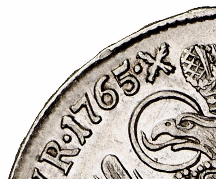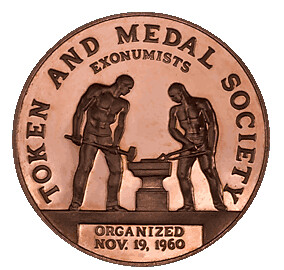
PREV ARTICLE
NEXT ARTICLE
FULL ISSUE
PREV FULL ISSUE
NOTES FROM E-SYLUM READERS: JUNE 11, 2017The New Departure Bell Company
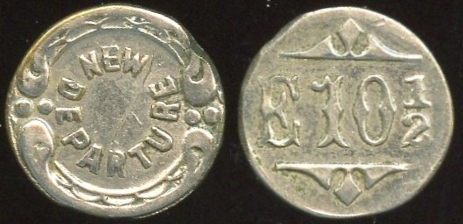 John Phipps of Atlanta, GA. writes: Regarding the Bristol, CT, New Departure Token in the Feisel Sale, you asked “An interesting whatzit indeed. Does anyone know what this might signify?” Well, maybe I have a partial answer or clue to the answer. In 1888, brothers Albert & Edward Rockwell started the New Departure Bell Company to make doorbells in Bristol, CT. Later they made bicycle coaster brakes. They had patents in bearing design and manufacturing and made double row and single row bearings for the automotive industry. In 1916 the company was purchased by William Durant and merged in to United Motors. United Motors was bought outright by General Motors in 1918. For five decades, New Departure was Bristol’s largest employer. When the Bristol plant was closed in the 1995 it was the oldest operating factory in GM. I got nothing on the side with "E 10 ½!" Interesting - thanks! As an old paperboy, when I think "doorbell" I think "address", and the reverse inscription looks like it could be the address of a building
or apartment. But it would be very expensive to make a set of tokens where each has a different address - it would make more sense if numbers were stamped on as in claim checks. Any other ideas,
readers? -Editor
John adds: I used to live and work in Dayton, OH when I worked for the Delco Chassis Division of GM. The Bristol, CT Plant was part of our division when it closed. I was still working there at the time. The token could be a lot of things, Cafeteria or food service token before vending machines, piece work tokens received when turning in full units of production, production control token telling that the next production job was to be "E 10 1/2" bicycle brakes, or a tool claim check or property claim check token. Or the guys in Die Shop could have been having fun with "E"arl when he caught a "10 1/2" fish!!! Any other ideas, readers? -Editor
To read the earlier E-Sylum article, see:
What is the 'Jap Statue'?
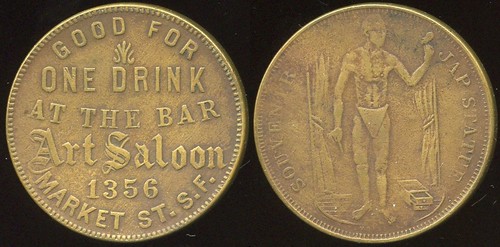 I asked about another token in the Feisel sale representing a "Jap Statue". -Editor
Ken Barr writes: The token itself is fairly common, but popular, and usually found in well-circulated condition. Five are listed for sale on eBay at present (most are optimistically priced, as usual) and three others have actually sold on eBay in the past two months (for between $41 and $89.99). Ken provided a link to a thread on the Coin People forum. Thanks. -Editor
I first saw this sculpture as a kid on vacation in San Francisco. It was at the Cliff House at a Ripley museum and later at Fisherman's Wharf if I remember correctly. It is now located at a Ripley museum in Wisconsin. The artist Hananuma Masakichi was dying of tuberculosis and he endeavored to carve a life-sized sculture of himself. He used his own hair (individually pulled and inserted into small holes), all his hair including eyelashes, etc., his own fingernails, and his own teeth. A description from a historic postcard reads: The statue is composed of over 2000 separate pieces being hollow with the exception of the feet. The head, thighs, calves, and every member of the anatomy was carved separately and the whole put together. The joints were perfectly made, dovetailed, and glued together -- no metal nails, only wooden pegs or pins beings used to fasten where necessary. After putting all the members together and finishing as far as the woodwork was concerned, he painted and lacquered the statue to give it the flesh and blood appearance; The hairs which adorn the figure belong to himself. He used clippings of his head and ears and each and every hair is bored for and put in one by one. The body hairs were actually pulled from his own body and put in exactly the same position as they occupied on himself. The eyes were also made by the artist and are the wonder of the oculist and optical precision. The statue is one of those things that sticks in my memory from childhood. I now own a token to remind me of those memories. 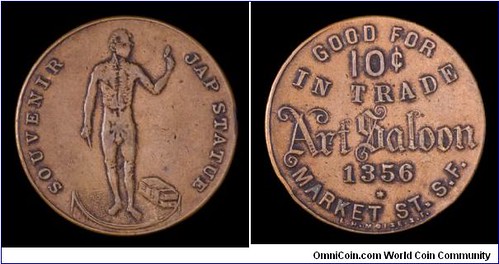 The token pictured on the forum is less modest - the statue is sans loin cloth. -Editor
To read the complete article, see:
To read the earlier E-Sylum article, see:
The Not-So-Secret Mark
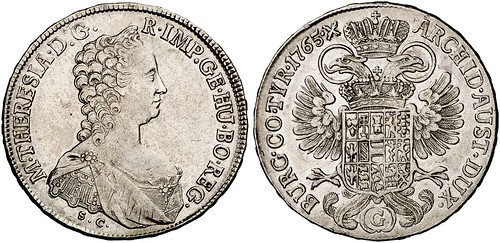 In order for the officials to be able to recognise the "bad" coins, a saltire was put after the year. Of course this "secret mark" did not stay secret for all too long... Robert Laviana writes:
Some secret! -Editor
CoinsWeekly editor Ursula Kampmann of Germany writes: Sometimes it makes sense to read the text and look at the coin. So please take a look at the coin, check its date and behind it you will find the saltire. 'Secret' is relative - in a community where only a small percentage of people were able to read, it might have been a little bit different... Excellent point! For those us us who do read, it helps to know what "saltire" means, and I didn't. To a dummy like me, I might as well be told to look for a
"flying gromulet". I get a blank look like when my wife says, "You remembered to do that thing for me today, right?" Next time anybody asks me to look for a saltire, I'll be
prepared. -Editor
From Google: another term for St. Andrew's Cross.
From Wikipedia: A saltire, also called Saint Andrew's Cross, is a heraldic symbol in the form of a diagonal cross, like the shape of the letter X in Roman type. The word comes from the Middle French sautoir ("stirrup"), possibly owing to the shape of the triangular areas in the design. François R. Velde writes: It's right there on the convention half-thaler of 1765, after the date. The saltire (heraldic term for the St Andrew's cross or diagonal cross, as opposed to upright cross) is visible. It's actually "raguly" that is, has little projections like cut-off boughs on a trunk, and is also known as the cross of Burgundy, used as a badge by the dukes of Burgundy, from whom Maria Theresia descended. It also appears on Spanish coinage. I don't know if it was really a secret mark, though, or a mint mark Thanks to Martin Purdy of New Zealand, who also pointed out "the cross-like symbol after the date." -Editor
To read the earlier E-Sylum article, see:
To read the Wikipedia article, see:
More on Silver 'Panamint Balls'
Something doesn't make sense. Why didn't the bandits just steal the wagon which already held the cannonballs? Well, there's a lot that doesn't quite make sense in these tales, which is why Bob Van Ryzin believes the story may have been made-up or exaggerated. I wondered about that point myself, but believe the reasoning would be the same general principal in effect today - while you can never completely prevent a determined thief, you can and should make it hard for them. If the silver was in the form of small bars, robbers could easily carry and conceal them, and blend in with the crowd. If they had to hijack the entire vehicle they would be easier to spot down the road. Prison inmates aren't given orange jumpsuits to prevent them from escaping - they're meant to make them easy to spot if they do escape. -Editor Ken adds: I agree. However, I was thinking of how the road may be outside of town, in the middle of nowhere. The bandits would ride in from someplace & steal the wagon & take it to their hideout. Once there, they could then figure out what to do with the silver cannonballs. Or perhaps I just watched too many westerns in my youth. To read the earlier E-Sylum article, see:
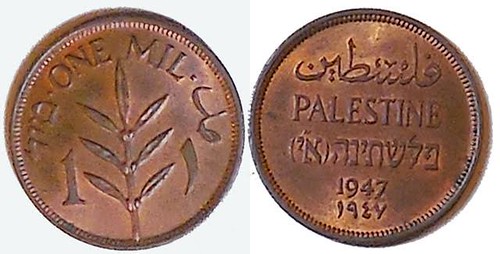 SELECTIONS FROM THE DR. ALAN YORK COLLECTION OF INTERNMENT CAMP AND RELATED PAPER MONEY INCLUDING 3 DIFFERENT NOTES FROM CAMP HAY, NUMEROUS WORLD WAR II RELATED NOTES FROM BRITAIN, ISLE OF MAN, ETC. PLUS A COMPLETE SET OF GIL GIL POW CAMP NOTES FROM KENYA A NICE SELECTION OF WORLD COINS, TOKENS AND MEDALS IN ALL METALS INCLUDING: ANCIENT AND WORLD COINS INCLUDING MANY CERTIFIED COINS THE EXCEEDINGLY RARE, AND PERHAPS FINEST KNOWN, 1947 1 MIL COIN OF PALESTINE HIGH GRADE AND RARE WORLD COINS WITH MANY COINS FROM AFRICA: SOUTHERN RHODESIA 1932 PROOF SET SOUTHERN RHODESIA 1954 2 SHILLINGS OTHER RARITIES FROM SUDAN TO ZANZIBAR JEWISH RELATED MEDALS, TOKENS AND PAPER MONEY AND MANY OTHER ITEMS Catalogs will be mailed early to mid-June, send $10 for printed copy or check our website for color images. The sale should be up on our website in early June as well. LOT VIEWING at Kansas City International Paper Money Show June 8-10, Colorado Springs Coin Show during the break from the ANA Summer Seminar June 21-24. P.O. Box 785, Littleton, CO 80160-0785 Phone-720-981-0785 Fax-720-981-5345 Cell phone 303 910 8245 Bill@Rosenblumcoins.com www.rosenblumcoins.com More on the Navy Medal of Honor
The Navy Medal of Honor was issued from 1861 to 1913. David Klinger writes: The Medal of Honor in question is a Navy type 4 (1942 or later). The listing implies that the item is a museum reproduction. My article on the subject from 2011 follows Thanks - here's David's article and images. -Editor
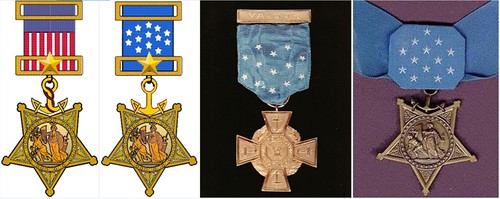 Navy Medal of Honor types There have been four design types of the Navy Medal of Honor. The Navy was the first to introduce the Medal of Honor. This decoration has been awarded to both Navy and Marine members since 1862. The first type was introduced in 1862 and was used until 1913. The Navy's Medal of Honor was the first approved and the first designed. The initial work was done at the Philadelphia Mint at the request of Secretary of the Navy Gideon Wells. The design prepared by the Philadelphia firm of William Watson & Sons was the design selected. The central design of Minerva repulsing Discord was symbolic of the Civil War and was used on three of the Navy types and was also used for the first two Army types The second type was used from 1913 to 1942. Note that the rope was removed from the anchor. And, this was the first time the 13 star pattern was introduced on the Navy ribbon. The third type referred to as the "Tiffany Cross" Medal was introduced in 1919. Prior to WWII the Medal of Honor could be awarded for both combat and non-combat actions. This rare Tiffany type was only awarded for combat actions. The legend in the center reads: UNITED STATES NAVY 1917-1918. It's not clear to me how many were awarded (somewhere between 7 and 27) - all for action in WWI. The fourth type is the modern and present version of the medal and was introduced in 1942. As far as I can determine, the first recipient was Chief Petty Officer John Finn for action early on Pearl Harbor Day (7 December 1941). To read the earlier E-Sylum article, see:
Siege Coins and Banknotes of Brazil
Giordano Sereno of Brazil submitted these notes on some of the images in last week's issue. Thank you! -Editor
First of all, I would like to congratulate you for the excellent work in The E-Sylum. The June 4th edition included pictures from UNAN Numismatica magazine. Some of them are Brazilian coins and banknotes. I am really glad because I am E-Sylum assiduous reading and it's rare to find Brazilian stuff on it.  First, the obsdional coins. They were the first coins with the name "Brasil". At the picture, 12 florins gold coin 1645. The Dutch had invaded Pernambuco and then issued these coins for paying their soldiers. Second, a 2000 réis gold coin 1696 in an excellent shape. 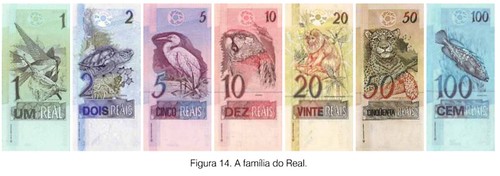 Finally, images from Brazilian real first family banknotes. It's a symbol of the fight of country against hyper inflation. Thank you for keeping E-Sylum. It's a great publication and my favorite way to start the week. You're welcome. Knowing the work is appreciated helps keep me going each week. Numismatics is always interesting, and it's fun to share with our international readership.
-Editor
To read the earlier E-Sylum article, see:
More on the Token and Medal Society
I agree that while a comprehensive American medal catalog is a great idea, it is also impossible to achieve, thanks to the sheer size of the field. I believe the best we can hope for will be publication of comprehensive specialized catalogs, personified by Bob Julian's Medals of the U.S. Mint, Neil Musante's recent Medallic Washington and my own American Art Medals. None of these present price guides, however, which will discourage the "what's it worth" crowd. Worth looking up, if you can find them, are the paperback annual guides to U.S. medals published by a young collector named Clifford Mishler of Vandalia, Michigan, before he became "THE" Cliff Mishler of Iola, Wisconsin. That was long ago, and the volumes published are virtually unknown today. To read the earlier E-Sylum article, see:
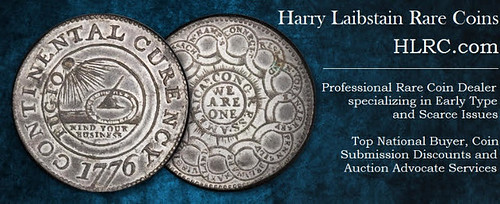 More on The Invisible Empire Tokens
Dick Grinolds submitted these notes on KKK tokens. Thanks. -Editor
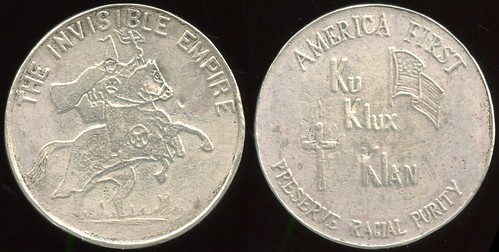 I actually remember the ads for these tokens in several numismatic publications in the early 1960's. The exact entries listed below are from the standard reference catalog for KKK tokens. I have been told that Mr. Birdsell had very good sources for information inside the organization; I do not know his current status. As most collectors are aware, many of the early KKK tokens from the First and Second Movements have been faked (unauthorized copies) and many pure fantasy issues flood the flea markets and swap meets from coast to coast. Ku Klux Klan Tokens, 2nd Edition, D.E. Birdsell, paperback with card covers, 44 pages, (1st Edition - 1977; unauthorized reprints of both editions are sometimes offered) KM-301. (1965). A private firm, Cajun Coins of Mandeville, Louisiana, caused this token to be struck during the Centennial Year of the Ku Klux Klan. The issue was not endorsed by any Klan organization; it was commercialized via advertising in collector's trade papers. Forty-nine (49) copies (rim-numbered 1-49) as illustrated (see, incused composition mark in exergue on obverse). Manufactured by acid engraving process. Sterling silver, 37mm. KM-301.1. (1965). The manufacturer at New Orleans, using 14 gauge metal, acid engraved 4,000 additional copies from same (KM-301) dies toward completing in one operation the variation of metals (and colors) specified on the single order. Aluminum, 37mm. KM-301.2. (1965). As above, same operation (KM-301) & KM-301.1) produced 1,000 additional copies in anodized gold color to finalize the single order. Aluminum, (anodized), 37mm. To read the earlier E-Sylum article, see:
Wayne Homren, Editor The Numismatic Bibliomania Society is a non-profit organization promoting numismatic literature. See our web site at coinbooks.org. To submit items for publication in The E-Sylum, write to the Editor at this address: whomren@gmail.com To subscribe go to: https://my.binhost.com/lists/listinfo/esylum All Rights Reserved. NBS Home Page Contact the NBS webmaster 
|
